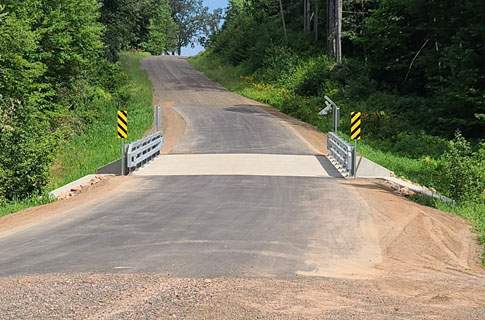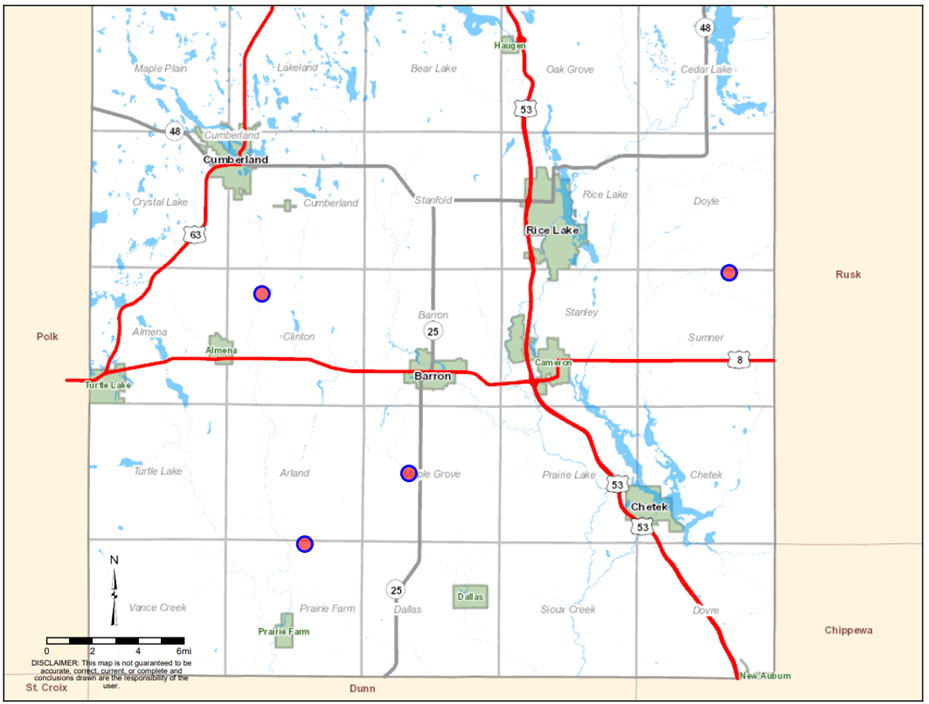
Throughout this year, men and women were on the job operating, maintaining, and building Wisconsin’s transportation infrastructure. When efforts to combat the pandemic led to drastically reduced traffic on the roads, the Wisconsin Department of Transportation, contractors, and local units of government found the silver lining – the opportunity to complete projects faster, more efficiently, and safer.
And during this time, WisDOT and the Wisconsin County Highway Association kept working to find ways to streamline the delivery of less complicated local projects. A little over a year after WisDOT and WCHA announced the Low-Risk Bridge Pilot Program, half of the original 16 bridges have been replaced or will be this year.
“As part of this pilot program, we took the process apart, and we reevaluated every step,” said Dan Fedderly, executive director of the Wisconsin County Highway Association. “The goal was to deliver simple, low-risk projects more efficiently and faster without jeopardizing quality, safety, or the environment.”
To be eligible for the Low-Risk Bridge Pilot Program, local bridges had to have minimal environmental, right of way, utility, or railroad impacts. The selected 16 projects were already part of the Local Bridge Improvement Program and were paid for with state and local funds.
Barron County had four single-span, slab bridges – three town road bridges and one county road bridge – accepted into the pilot program last summer. The three town bridges have been replaced, while construction on the county bridge is scheduled for September and is expected to wrap in mid-October.

According to Fedderly, the typical timeline for these types of bridges from the start of design work to the end of construction is three to five years, compared to about one year for the pilot program.
The selected Barron County pilot program bridges ranged in age from 55 to 100 years old. All were rated structurally deficient.
“Farmers in the area need these bridges to get their product to market,” said Barron County Highway Commissioner Mark Servi. “With an older, deficient bridge, there is always the possibility for weight limit posting in the future as the bridge continues to deteriorate,” Servi continued. “These new bridges will benefit everyone in the areas for years to come.”
Beside dramatically condensing the project window, Barron County bundled the three town bridges into one bid letting. The same contractor was the low bid on both the town bridges and county bridge, resulting in a total cost 17% below the estimate.
“We learned a lot in the first round of projects in the pilot,” said Servi. “The first thing we learned: it is doable.”
Similar efficiencies were achieved with pilot bridge projects in other areas of the state.
In June of this year, WisDOT announced the pilot program will roughly double, expand to other roadway projects, and be open to projects with federal funding.
“This program is a proven opportunity for local governments to reduce costs and expedite project delivery,” concluded Fedderly.
